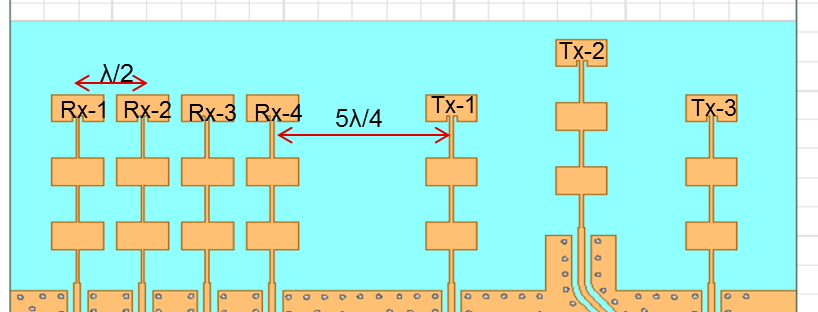Hello Gents,
I have a question about the radiation pattern of the 1443 EVM board. I ran a couple of tests on the board to check the location of the peak energy. It turns out the peak energy isn't located at Angle[theta, phi] = 0; rather, this peak is found at theta = 18 degree, phi = 6 degree where theta and phi is the azimuth and the elevation angle respectively.
The following is the result from the test.
Separate tests was done for Energy vs. Elevation angle and Energy vs. Azimuth angle. In both tests, the module is fixed onto a "marry-go-round" like plate, and the data is taken by slowly rotating the plate by small increments of +3 degrees for CW measurement, and small decrements of -3 degrees for CCW measurement. (Note: sign and direction are arbitrary choice.) The energy reflected from the metal reflector, which is FIXed @ a distance about 0.75 meters away from the module, varies as I rotate the plate by the defined steps. A plot is generated after the energy data @ different angles is taken; then, the plot/data is trimmed off based on the curve symmetry. Then a curve fitting is applied to obtain an expression for the curve followed by a 1st derivative test to obtain the estimation of the actual radiation center.
As the result shows, the actual radiation center isn't coincide with the axis center (0,0) but is located near the coordinate (18, 6). I know that for my board only the TX-1 and RX-4 antenna are activated and used for data processing.
So my thoughts for the +6-degree elevation angle (up-steering) is that a delay is added to each of the consecutive TX-Patch elements as AC current travels along the TX-1 Column, that is, Bottom Patch Element radiates @ t0, Middle Patch Element radiates @ t1, Top Patch Element radiates @ t2, where t2 > t1 > t0; therefore, Radiated beam steers toward up. I am not sure if this is what's happening here, so please correct me if this isn't the case. Also, I'm very confused about the Azimuth angle radiation pattern. I couldn't come up with any theory to explain the peak energy at azimuth angle near +18 degrees rather than 0 degree.
Thank you very much for your help gents.
Regards,
Zhengguo Sun


